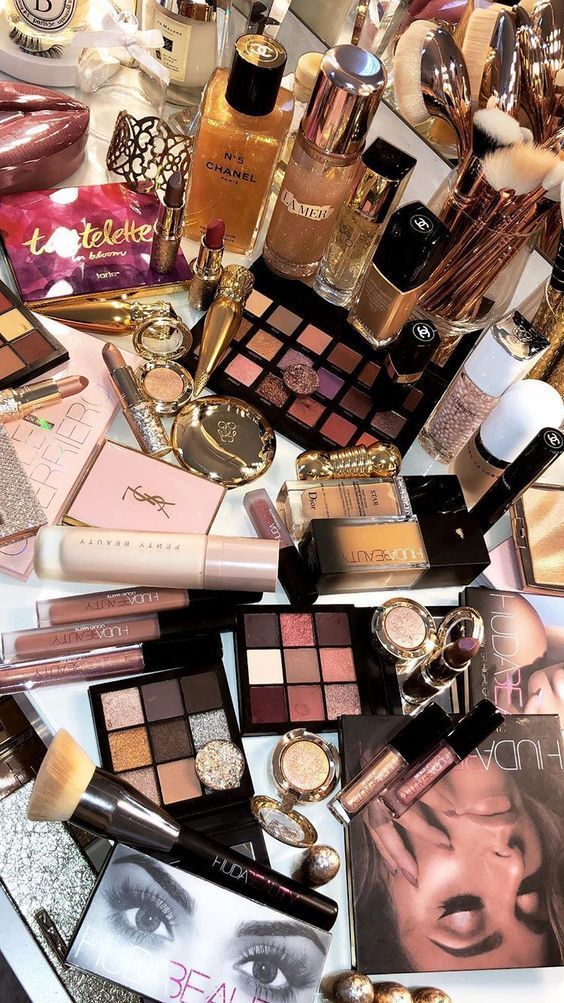
Makeup is a diverse range of cosmetic products used to enhance or alter the appearance of a person, typically on the face. It involves the application of various materials to the skin, eyes, lips, and other parts of the face to achieve different looks, from subtle enhancement to dramatic transformations. The process of creating makeup products is complex, involving a combination of raw materials, chemicals, and manufacturing techniques to produce products that are safe, effective, and long-lasting.
Ingredients and Composition of Makeup
The primary ingredients used in makeup vary depending on the type of product but generally include a combination of natural and synthetic components. These ingredients are formulated to provide color, texture, coverage, and durability, while also ensuring safety for use on the skin.
- Pigments and Dyes: Pigments are key in giving makeup its color. These can be mineral-based, derived from natural sources like plants and minerals, or synthetic, created in labs. Common pigments include titanium dioxide, iron oxide, and mica, which are used in foundations, blushes, eye shadows, and lipsticks. Dyes are often used for liquid makeup products like lip gloss or eyeliner.
- Emollients: Emollients are ingredients that help to soften and smooth the skin. These are often oils, butters, or silicone-based compounds. They are used to improve the application and feel of makeup. Examples include lanolin, castor oil, and dimethicone. These ingredients help makeup glide smoothly over the skin and ensure it doesn’t dry out or feel heavy.
- Binders and Fillers: To ensure makeup stays in place and has a smooth texture, binders and fillers are used. These ingredients help hold the makeup together in a consistent form. Common binders include cellulose, glycerin, and stearic acid. Fillers like talc, silica, and kaolin clay are used to adjust the texture and volume of the product.
- Preservatives: Preservatives are crucial in preventing bacterial and fungal growth in makeup, especially in products that contain water. Common preservatives include parabens, phenoxyethanol, and sodium benzoate. These compounds help extend the shelf life of the product and ensure it remains safe to use.
- Active Ingredients: Some makeup products, such as foundations or primers, contain active ingredients that benefit the skin. These can include antioxidants (e.g., vitamin E), moisturizers (like hyaluronic acid), or SPF (sun protection factor) agents to protect against UV rays. These ingredients are often added to promote skin health while also providing the desired cosmetic effect.
Types of Makeup Products
Makeup is typically divided into several categories based on its function and the area of the face it is applied to. Each type has its own formulation to achieve the intended effect.
- Face Makeup: This includes foundation, concealer, blush, and powder. Foundation provides an even skin tone, concealer covers blemishes or dark spots, blush adds color to the cheeks, and powder helps to set the makeup and reduce shine. These products are often available in liquid, cream, stick, or powder forms.
- Eye Makeup: Eye makeup products include eyeshadows, eyeliners, mascaras, and eyebrow products. Eyeshadows add color to the eyelids, eyeliners define the eyes, and mascaras enhance the lashes. These products often use a combination of pigments, waxes, and polymers for long-lasting color and volume.
- Lip Makeup: Lipsticks, lip glosses, and lip liners fall under this category. These products provide color and texture to the lips, with different finishes such as matte, glossy, or satin. Ingredients like castor oil, beeswax, and pigments are common in lip products.
- Specialty Makeup: This includes products like highlighters, bronzers, and primers that offer specific effects. Highlighters illuminate the skin, bronzers provide warmth and contour, and primers create a smooth base for makeup application.
Manufacturing Process
The process of making makeup products begins with research and development to ensure that the formulas are both effective and safe for consumers. Companies test the products for texture, color payoff, durability, and compatibility with different skin types. After the formulation is finalized, ingredients are sourced and mixed in a controlled environment to create the desired product consistency.
The product is then packaged, with specific containers and dispensers chosen for their ease of use and ability to protect the formula from contamination. Products are often tested for stability, ensuring they maintain their quality and effectiveness over time.
Conclusion
Makeup is an intricate combination of ingredients that work together to create products that enhance beauty, express creativity, and sometimes improve skin health. The careful blending of pigments, emollients, binders, and preservatives in various forms (powders, liquids, creams) results in products used across the world. Whether for everyday wear or special occasions, makeup allows people to transform their appearance and express their personality, all thanks to the science behind its creation.